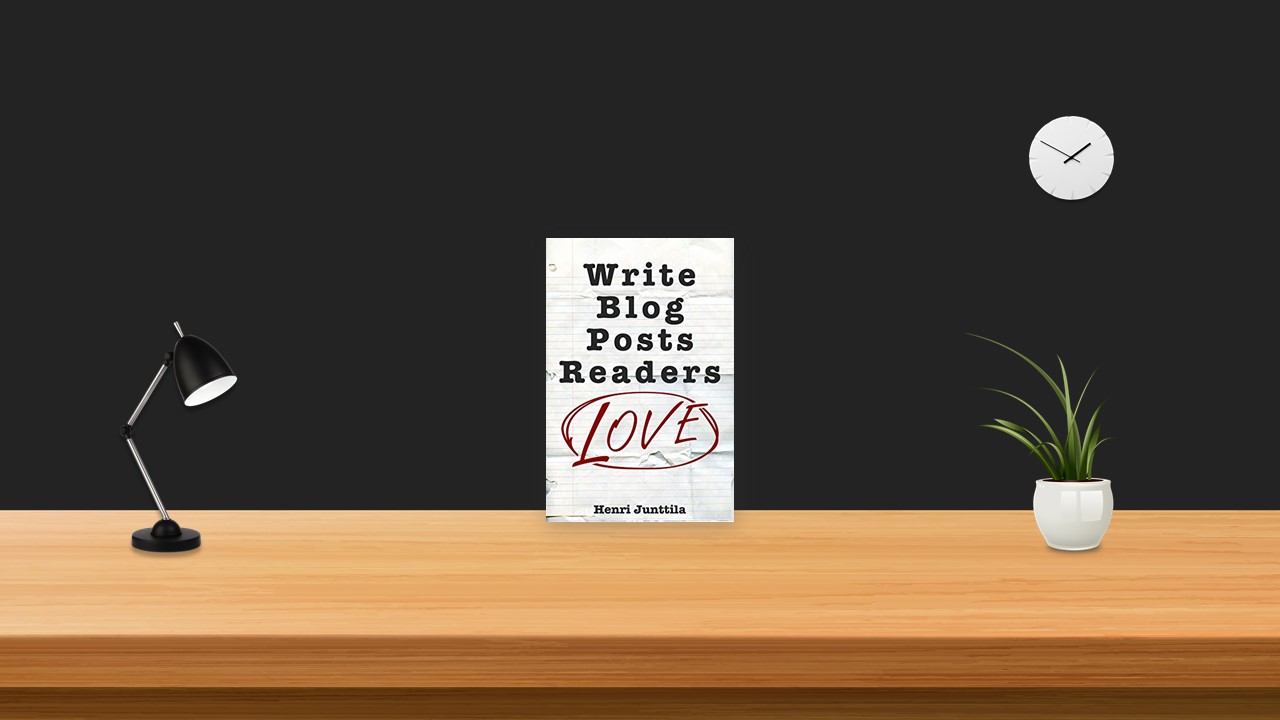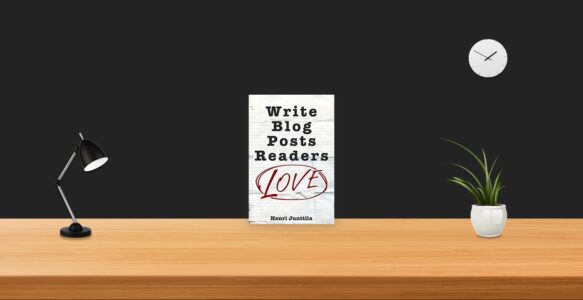Uncover Your Blogging Voice
Your writing is what it is. You can’t change that. You can’t outthink it by “finding your voice.”
You have to start where you are with what you have. Yes, that voice in your head will tell you that you’re not good enough, but it doesn’t matter.
When you keep putting your writing out there, people will start reading, and some of them will love it. The only thing that matters is that you keep writing.
Always keep writing. No matter what anyone tells you. No matter what that inner voice whispers.
If writing brings you joy, then write, because it is only through writing that you will improve. But you have to be willing to stop believing your own … crap. You have to be willing to embrace the discomfort and just write.
Are you ready to do that? If so, then this book is for you. We’re just getting warmed up here.
Find Your Ideal Reader
The first step is asking who your ideal reader is. Factors to consider are:
– Gender
– Age
– Marital status
– Children
– Income
– Likes/Dislikes (movies, books, etc)
Next, ask yourself what your ideal reader wants. Your readers will stay because you give them something of value. It could be entertainment, education, or encouragement. Whatever it is, your reader wants something.
To figure out what your ideal reader wants, ask yourself questions like:
– What does he/she ultimately want to accomplish?
– Why does he/she want this?
– What are his/her dreams?
Don’t try to come up with the perfect ideal reader. There are no rules you have to follow. Just keeping someone in mind while you write will help you write blog posts that readers love.
Above all, remember to have fun. There is no rule that says that you have to take blogging seriously. Play around with your ideal reader and write. You’ll eventually figure it out. Your ideal reader may not be perfect. It doesn’t matter. Do your best and write. That’s how you’ll figure this out.
Tell Inspiring Stories
Writing an inspirational story is about finding a problem your audience has and telling a story that shows how you once had that problem and how you solved it.
From there it’s up to you to decide how detailed you want to make the story. You can always write more articles if people want to know more. Remember, you don’t have to give away everything in every post. It’s okay, and even preferable, to leave your readers wanting more.
- Find a problem your ideal reader has
- Identify a story where you had the same problem and solved it
- Tell the story in a post
Don’t try to craft the perfect story. Write from your heart, and tell your story. It doesn’t have to be perfect to inspire.
Craft Compelling Headlines
When you’re starting out, the best way to create headlines is to steal them. In other words, look at headlines that already work and use them to write your own.
- Start a Swipe File. A swipe file is a file where you collect the headlines that resonate with you. If you bump into a popular post that has an intriguing headline, save it to your swipe file. A swipe file can be as simple as a document on your computer.
- Write Your Headline First.
- Practice, Practice, Practice.
Headline Templates to Get You Started
To get your swipe file started, here are a few favorite headline templates.
Simply replace with your own.
- “10 Ways to Get More Traffic to Your Blog”
- “7 Deadly Mistakes Most Blogger’s Make”
- “How to Write an Ebook in 30 Days or Less”
- “How to Get a Six Pack Even If You’re a Couch Potato”
- “The Secret to Writing a Best-Selling Book”
- “Why You’ll Never Find Your Passion in Your Life (And What to Do About It)”
- “The Ultimate Guide to Starting a Popular Blog”
- “What to Do When You’re Afraid of Failure”
- “The Best Way to Do What You Love”
- “How I Went from 0 to 1,012 Blog Subscribers in 101 Days”
- “The Truth About Blogging That No One Wants to Admit”
- “What Nobody Ever Tells You About Blogging”
- “How to Never Succeed at Blogging”
- “What Star Wars Can Teach You About Writing a Book”
Write Scannable Posts
This is obvious, but most people don’t write this way, because learning to write scannable posts takes work. It’s much easier to dismiss this as obvious and then publish post after post that’s not up to standard.
There’s nothing revolutionary here, but are you breaking up your content? Do you make sure you stay on topic when you write? Do you use simple language? If not, then it’s time you mastered the fundamentals.
Many bloggers want to skip right to the advanced stuff. They believe they’ll succeed faster if they do, but it is only through putting in the work and learning the basics that you will succeed.
Have a Writing Process
The fewer things your brain has to think about, the more energy you have left to produce great blog posts. A writing process helps you save energy, because you know what you need to do next, how you need to do it, and when.
- Outline
An outline doesn’t just have to be a list in a document. It could also be a mind map. There’s no one way to outline, so feel free to find what works for you. What matters is that you flesh out the structure of your article before you begin writing.
- Write Horribly
After you’ve got an outline in place, your job is to fill that outline with horrible writing. Don’t even try to write well. Dump your mind on paper. Forget about grammar, mistakes, flow, and anything else.
Later, you’ll come back to rewrite and edit. That’s when you can get picky and worry about grammar, but for your first draft, forget perfection and write like you’re insane. Write like there are no rules.
- Drop It
When you take your 24 hour break, what do you do? You could outline other posts, focus on other tasks, or take a walk. It’s up to you. What matters is that you let your post sit for at least 24 hours.
- Rewrite
After 24 hours, come b ack and rewrite your content. Sometimes this means rewriting the whole post, and sometimes it just means you do a few quick edits.
Bye Bye Perfection
This writing process allows you to minimize perfectionism and fear. Your goal is to write a horrible first draft, not to get a perfect post done right away.
You also give yourself time to write. You avoid having to write and publish a post on the same day, because it means you’ll be more likely to miss obvious mistakes. Also, your brain will thank you for extra time to think about your article.


